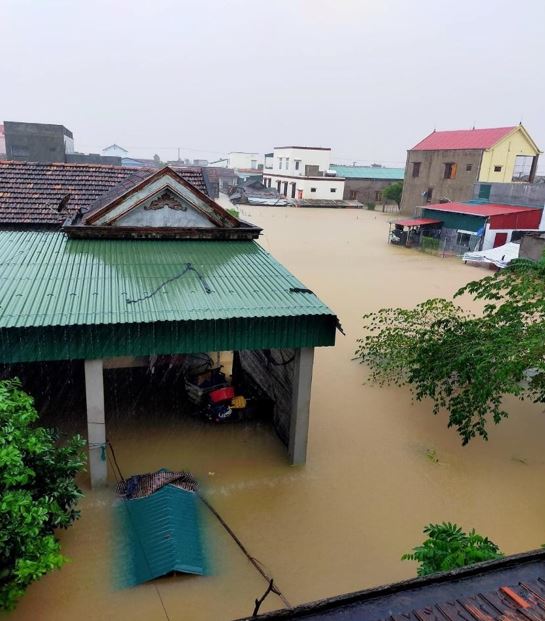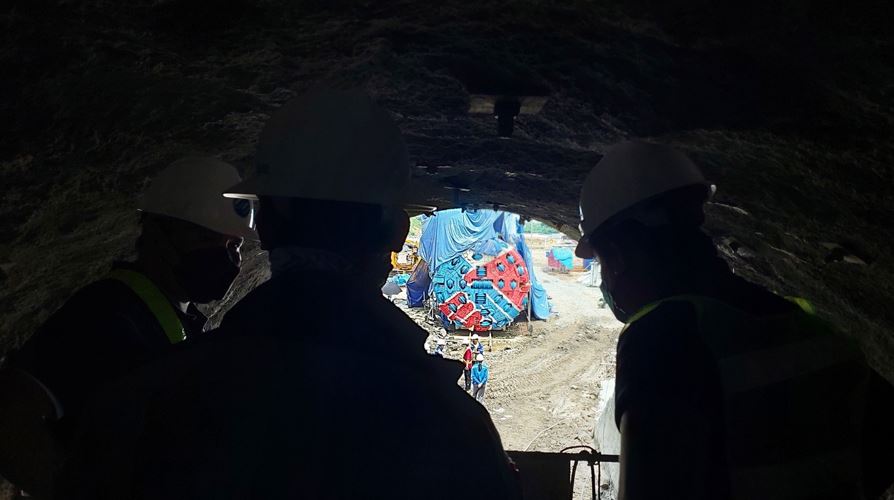One important lesson that emerged from the pandemic is that governments are not able to provide all the services that urban citizens need in a crisis situation. For Southeast Asia, this is critical because local governments, especially, have a lack of expertise, capacity, and financial resources in disbursing assistance to urban citizens. Therefore, many community-based initiatives run by civil society and philanthropical organisations emerged to close the service gaps or provide temporary solutions, writes Melinda Martinus
_______________________________________________
As climate impacts such as drought, floods, and heat waves intensify, cities are at the forefront of facing those challenges. Interestingly, multi-crises like the Covid-19 pandemic, supply chain disruptions resulting from the war in Ukraine, and the inflationary pressure have tested cities’ adaptability in responding to shocks. Managing these crises can be an invaluable lesson for planners to rethink future scenarios should cities face dramatic climate catastrophes in the future.
Looking at Southeast Asian cities adapting to multiple crises, many might be surprised by how agile, flexible, and responsive urban communities in the region could be. The region’s metropolises, such as Jakarta, Manila, and Bangkok, have consistently ranked among the world’s most polluted and congested cities in the world. Cities in the region, such as Bandung, Surabaya, and Kuala Lumpur, are plagued with high levels of environmental risks. Ho Chi Minh City, Yangoon, and Hai Phong rank among the cities most exposed to coastal flooding. While these images are well-known, many good lessons and experiments emerged from cities in the region as responses to multiple crises in the past years. Here are five examples:
Bringing Food Production Back to Cities
Geographers have long argued that urban areas are built for high-yield industries and services, while peri-urban and rural areas can serve cities in producing agriculture and food products. In most cases, urban areas are also dependent on food imports due to their connectedness to the global supply chain. While this remains true, the experience of the pandemic and supply chain crisis has shifted this perspective. Cities still need to have a certain level of domestic food production capabilities to provide a cushion should supply chain disruptions happen and global price volatility unhedged.
The food supply disruption from Malaysia has become a turning point for Singapore to increase its own domestic food production. The city-state currently imports approximately 90 per cent of its food. However, as Singapore will face disruptions in the food supply, such as volatility in crop yields, geopolitical developments, and climate change, the government embraces the Singapore 30 by 30 initiative with the objective to locally produce 30 per cent of its nutritional needs by 2030. From vertical gardens to retrofitting empty spaces for urban farms and integrating community farms in public spaces, Singapore aims to cut reliance on imports while helping boost the city-state’s green movement to adapt to climate challenges.

Community-Based Initiatives Closing Service Gaps
One important lesson that emerged from the pandemic is that governments are not able to provide all the services that urban citizens need in a crisis situation. For Southeast Asia, this is critical because local governments, especially, have a lack of expertise, capacity, and financial resources in disbursing assistance to urban citizens. Therefore, many community-based initiatives run by civil society and philanthropical organisations emerged to close the service gaps or provide temporary solutions.
The Philippines Homeless People’s Federation mobilised efforts to identify homeless people and deployed immediate interventions to help those exposed to the virus. The group also made a critical intervention by setting up a communication channel for disbursing assistance for those losing their livelihood and employment due to lockdown measures adopted by many localities in the country.
Similarly, laporcovid10.org in Indonesia was set up by a group of scientists and volunteers as a crowdsourcing digital platform to report and record COVID-19 incidents from the ground up before the national government stepped up to create an official COVID-19 reporting platform. With the power of digital infrastructure, the platform successfully filled information gaps and worked at scale to create a better impact.
Urban Mobility Quickly Adapting to Disruptions
The COVID-19 pandemic disrupted urban mobility as many localities across the region adopted draconian lockdown measures like reducing public transport services. However, many cities across the region were adaptive in deploying temporary solutions for urban mobility. Temporary bike lanes quickly emerged in Manila and Jakarta as an alternative solution for those workers who still needed to move around the city to work and run essential services. These ‘pop-up’ bike lanes were separated from the main road using traffic cones and were intended to prevent the spread of COVID-19 by providing a safer option than public transport that was at risk of virus exposure.
While many argue that the biking movements in the region were rather transient, at least this experience has shown that urban citizens’ behaviour can be changed overnight should a crisis like COVID-19 happens in the future. Urban mobility is proven to be agile in adapting to sudden shocks. Citizens also started to realise the benefits of biking for health and better air quality. At least, it created an impetus for the need to justify cities to increase investments in soft mobility to solve perennial congestion and air pollution problems.

Nature-Based Solutions Gaining Ground
Cities across the region are increasingly aware that nature-based solutions are giving benefits beyond the beautification of urban landscapes. Bangkok, Singapore, and Jakarta made significant progress in reviving their urban parks.
Tebet-Eco Park in Jakarta was reopened to the public in 2021 after being revamped with better ecological and social features such as flood retention control, social spaces, and recreational facilities. Chulalongkorn University Centenary Park has become a critical green infrastructure equipped with a permeable surface for Bangkok to solve its severe flooding issue. Similarly, Jurong Lake Garden was launched in 2019 with a strong emphasis on wetlands restoration and habitat for biodiversity. Many of these investments emerged as citizens and city governments started to justify the multi-benefits of nature-based solutions for improving climate resilience, tourism, public health, and social benefits in urban areas.

Proactive City Governments in Climate Diplomacy
Many cities in the region, such as Jakarta, Manila, Makati, Bangkok, and Kuala Lumpur, have increasingly become proactive in joining various global climate networks, such as the C40 Cities Climate Leadership Group (C40), the Strong City Network, the United Cities and Local Governments (UCLG), the Global Covenant of Mayors for Climate and Energy, the Local Governments for Sustainability (ICLEI), and the ASEAN Smart Cities Network. Together with many global cities in the world, they share their vision of creating sustainable cities.
These networks have facilitated Southeast Asian cities to gain knowledge and insights, access networks and support, and exercise their agency in climate diplomacy. In some ways, their participation makes them more articulate in defining their cities’ problems, limitations, and goals. Similarly, having Southeast Asian cities, especially the metropolitan and large cities, these global city networks increase their relevance and outreach in the region and get the opportunity to document best practices to share with their members. It remains to be seen if participating in these networks can truly help regional cities to be more resilient in adapting to climate change and improve their performance in reducing carbon emissions.
Conclusion
As the COVID-19 pandemic and economic pressure started to ease now, it is critical for cities in the region not to lose the momentum for changes. Urban stakeholders in the region have made significant progress in adapting to various socio-environmental challenges regardless of their shortcomings. The magnitude and urgency of climate challenges, which are rather slow on set and long-term, might not be as pressing as the sudden shock brought by the COVID-19 pandemic. Yet, despite limited capacities, cities in the region can avert, minimise, and manage their resources innovatively.
______________________________________________
*Banner photograph by Yulia Agnis on Unsplash.
*This blog is based on a presentation given by the author at the Southeast Asia Urban Futures event held as part of the 2023 Southeast Asia Forum.
*The views expressed in the blog are those of the authors alone. They do not reflect the position of the Saw Swee Hock Southeast Asia Centre, nor that of the London School of Economics and Political Science.




